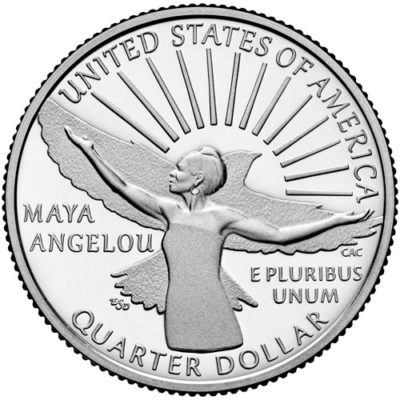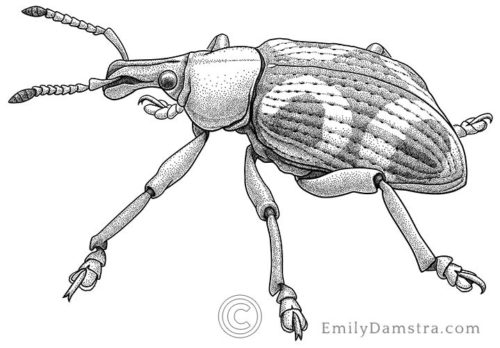Forest Hills — The newly minted Maya Angelou quarter has a very local connection: the designer is 1993 Northern High School graduate Emily Damstra.
A Forest Hills student from kindergarten on, Damstra now lives in Canada and is a United States Mint Artistic Infusion Program artist.
She designed the coin’s reverse – or “tails” – side celebrating Angelou, the late civil rights leader, poet laureate, college professor, Broadway actress, dancer and first female African-American cable car conductor in San Francisco. The “heads” side of the coin features George Washington.
Damstra earned a master of fine arts degree in science illustration from the University of Michigan. She now creates zoological, botanical, anthropological, ecological and paleontological illustrations that are found on interpretive signs in museums, zoos and natural areas, as well as in many different publications.
The Angelou coin is not Damstra’s first. She has designed more than a dozen coins for the Royal Canadian Mint and several postage stamps for the United Nations Postal Administration. She spoke with School News Network about her love for illustration and nature, her background in coin design and how her education in Forest Hills influenced her.

How did you come to be the designer of the Maya Angelou quarter, and coins in general? “I’ve been part of the United States Mint’s Artistic Infusion Program since 2014. As an artist in this program, I was invited to submit a design for the Maya Angelou quarter. A couple different committees and stakeholders reviewed the pool of submissions from all artists, and the Secretary of the Treasury made the final decision.”
How/when was your passion for illustration and science sparked?
“My mother is a very creative person who loves nature, and she nurtured my interest in art and my curiosity about nature when I was a kid. My parents provided me with ample art supplies and books such as a field guide to butterflies that inspired me to start a butterfly collection. Objects of nature became subjects for my drawings, and this continues to the present day. I feel fortunate that my parents never discouraged me from a career in art, which is often viewed as a difficult way to make a living (and it can be).”
‘I think the best advice is to seize opportunities when they are available, especially if they take one a little outside of one’s comfort zone.’
— Emily Damstra, designer of the Maya Angelou quarter
Do you remember when you became aware that your career field existed? “I became aware of natural science illustration at the end of my senior year at Alma College, when an art professor told me that this field of work existed, and my geology professor recommended a book to me that included some wonderful science illustrations. Then I found out that the University of Michigan was going to offer a master of fine arts degree in science illustration, so I applied.
“As for coin design, it was never on my radar until 2010, when I received a call out of the blue from the Royal Canadian Mint, asking me if I wanted to submit a design for a coin. It turns out that an artist I knew who designed coins for RCM gave them my name. I’m very grateful to those professors and to that artist for helping guide my career.”
Were any FHPS teachers or K-12 experiences particularly helpful in your career pursuits? “Yes, absolutely. I was lucky to have had (the late) Sue Rose as art teacher for part of my elementary school years at Orchard View and for all four years of high school. She was a superb instructor and a fine role model; I loved taking her art classes. She prepared me well for college. I can also recall learning the fundamentals of drawing light on form in middle school from Mrs. Quigley at Northern Hills Middle School; it is a skill that I apply regularly.”
Any advice for current K-12 students who love illustration and science? Perhaps an opportunity you would encourage them to pursue, or one you wish you’d had at that age? “For someone who loves both illustration and science, the field of natural science illustration might be a good fit; I think that simply knowing it exists as a career pathway can make a big difference to someone’s educational choices. The website for the Guild of Natural Science Illustrators has plenty of resources. For me, the practices that made me a successful science illustrator also translate well to coin design.
“But broadly speaking, I think the best advice is to seize opportunities when they are available, especially if they take one a little outside of one’s comfort zone.”












